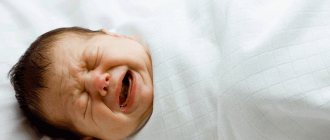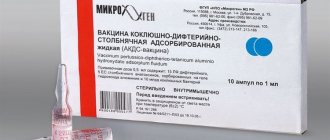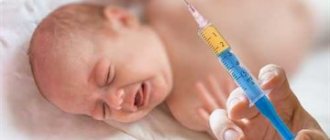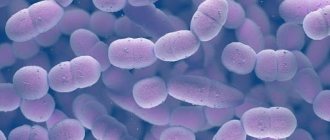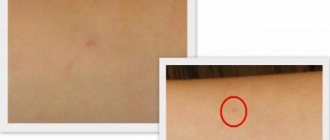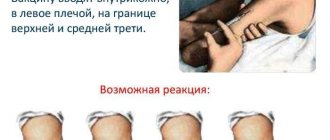The human body is very complex, especially when it comes to children. To develop immunity to a certain disease, you must either be infected with it or be vaccinated. The latter option is safer, since serious diseases such as tetanus, whooping cough, diphtheria, and polio have a lot of possible complications.
Moreover, today doctors, in order to avoid death, strongly recommend not refusing the DPT vaccine. Unfortunately, the threat is quite real, especially given the child’s young age.
Is it possible to walk with my child outside after vaccination the next day?
The decisive factor in this matter is the baby’s well-being and the characteristics of his post-vaccination reactions, often accompanied by hyperthermia, malaise, and local inflammatory manifestations.
If there is a temperature
Low-grade fever with values of 37.5-38°C, as well as hyperthermia with higher values, are a good reason to refuse walks in the fresh air.
In such cases, much attention is paid to creating a favorable microclimate in the nursery: maintaining sufficient humidity and comfortable air temperature - no higher than 18-20°C.
Wet cleaning and ventilation are regularly carried out, while drafts are not allowed that threaten the child with a cold, whose immunity is busy developing immunity to specific dangerous infections.
If there is no temperature
If the post-vaccination period proceeds latently, without fever and systemic pathological reactions, restrictions on walks are not imposed.
When assessing well-being, they take into account the age-related characteristics of thermoregulation of healthy infants, whose physiological temperature values directly depend on their motor and emotional activity and can normally reach 37.2-37.5 ° C in the evening. Therefore, they focus not only on the thermometer values, but also on the general condition of the baby.
Proponents of a healthy lifestyle consider walks in the fresh air an indispensable condition for the development of a child’s body, including its ability to form specific immunity.
Why can't you go for a walk after vaccination?
Proponents of the walking ban cite two main arguments in defense of their point of view.
Firstly, the immune system of a vaccinated child, busy with the formation of specific protection, is not able to completely protect him from pathogenic environmental factors, viruses and bacteria, thereby creating the preconditions for the occurrence of the disease.
Secondly, the desire of parents to protect the baby from infection by wrapping him up warmly results in active sweating, increased body temperature, irritation and inflammation at the injection site. Some parents share this point of view and consider walking for several days after vaccination inappropriate.
What consequences and complications can walking lead to?
The consequences of going outside are serious. The most undesirable thing is the addition of a secondary infection. Walking causes the following symptoms to occur:
- hyperthermia;
- redness and the appearance of compaction;
- swelling;
- abscess;
- itching;
- loss of sensation in the limb;
- exacerbation of chronic diseases;
- weaknesses;
- pain syndrome;
- irritability;
- drowsiness;
- apathy;
- allergies;
- diarrhea;
- anaphylactic shock;
- gagging;
- nausea;
- joint pain;
- conjunctivitis;
- development of acute respiratory diseases;
- lameness;
- Quincke's edema;
- headache;
- insomnia;
- rashes;
- breathing problems;
- sore throat;
- runny nose;
- cough;
- seizures;
- lymphadenitis;
- loss of appetite;
- continuous crying.
How many days is it advisable not to go outside after vaccination?
The duration of the ban on walks is determined by the child’s well-being and the characteristics of the post-vaccination stage.
In case of pronounced vaccine reactions, they remain at home with the baby during the entire period of hyperthermia, plus one more day after the temperature normalizes.
The ban on walking applies to cases of rapid post-vaccination reactions and the development of post-vaccination complications, as well as suspicion of a concomitant disease.
In these circumstances, the decision to establish a closed home regime is made after consultation with a pediatrician.
Go for a walk
Parents prepare for vaccination in advance: they monitor the child’s health and choose a period when teeth are not cutting. Therefore, even on the day of vaccination, a healthy child can go for a walk.
Usually the vaccination procedure takes place in the morning, and upon returning home, the baby has time to sleep and have a snack. How can you determine if your child can go for a walk after vaccination? It is imperative to monitor the child’s condition. The course of the post-vaccination period is considered good if:
- temperature is normal;
- the child’s hands and feet are warm;
- he ate as usual;
- fully active, but not overexcited.
If weather conditions permit, it's time to go outside. A winter walk takes place at a temperature not lower than 10 degrees below zero, while autumn and spring walks take place in the absence of rain and strong wind.
After administration of which vaccines is quarantine required?
Only vaccines containing live pathogens can pose a certain epidemiological danger. Limiting contact is required when immunizing a child with live oral polio vaccine.
The reason for quarantine is the likelihood of infection of people around him with the vaccine-associated form of this infection (VAPP).
Its source is a vaccinated child; the mutated polio pathogen can be transmitted from him to his close circle of friends through the fecal-oral route. Preliminary two-stage administration of inactivated killed polio vaccine completely protects contact children from VAPP.
Live measles vaccines contain a weakened pathogen that cannot infect other people. Even if the child develops a rash in the post-vaccination period, and contacts constitute a risk group: children, pregnant women, people with immunodeficiency or cancer pathology.
Live flu vaccines also do not pose a danger to people around the vaccinated child. However, it takes one and a half to two weeks for the body to form full immunity, so flu vaccination is carried out in advance - before the onset of the epidemic (in October).
If immunization is carried out at the height of the epidemic season, then during the specified time experts instruct the vaccinated person to limit contacts in order to avoid infection.
Depending on the situation, quarantine after vaccination is imposed in order to protect both the vaccinated person (DPT, influenza) and his immediate environment (AFP) during the vaccination period.
Is it possible to get a DTP vaccination before going to the sea?
Before going to the sea, you should not do DTP. After vaccination, the child is weakened. During the move, he can become infected with a viral or infectious pathology.
A baby can catch a cold on the beach. The child will probably want to swim in the sea. But it is prohibited to wet the puncture site or take water procedures for some time after the DPT injection.
Increased physical activity of the baby will further weaken the immune system. It is better to vaccinate your child a month before going to the sea.
If vaccinated with a live vaccine, is it possible to contact children?
Separation of vaccinated and unvaccinated children is carried out only when using live oral polio vaccine.
A two-month quarantine is also imposed on children who have received less than two or three vaccinations with an inactivated vaccine, as well as in case of errors in meeting the immunization deadlines. The actions of the heads of kindergartens and schools to separate OPV vaccinated children from unvaccinated children are regulated by Resolution of the Chief State Doctor of the Russian Federation No. 107 of July 28, 2011.
The quarantine period is 60 days, starting from the day of vaccination. In kindergartens, the child is usually transferred to another group where there are no recently vaccinated OPVs. However, the Resolution does not separately stipulate which of the children (vaccinated or not) is isolated from the group.
This controversial issue is resolved in each specific case, taking into account the capabilities, significance, positions and requirements of all interested parties: the child vaccinated with OPV, the unvaccinated contact and the educational institution itself.
Recommendations for parents regarding walking after immunization
A vaccinated child who is full of energy, lively, and in a good mood, whose vaccine reactions are latent, is not considered sick.
In the vast majority of cases, walks in good weather are not deprived of him, but they adhere to some rules recommended by experts:
- two to three quarters of an hour immediately after vaccination, during which the child is prescribed to stay near the medical office, is usually spent not in the corridors of the clinic next to sick children, but in the fresh air in the courtyard of the medical institution;
- for walks, choose a park or square away from highways, avoid playgrounds, shops and other places with large crowds of people - limit not so much walks in the fresh air, but contacts with other children and adults;
- maintain hygiene, often use wet or antibacterial wipes to protect the child not only from airborne infections, but also from intestinal infections;
- dress according to the weather, prefer natural fabrics: synthetic ones do not allow the child’s body to breathe, promote increased sweating and the appearance of irritation and inflammation at the injection site;
- infants are usually taken out into the fresh air while they sleep, older children are occupied with quiet games outside: excessive activity during a walk can provoke an increase in body temperature;
- in the hot season, children are provided with sufficient drinking conditions.
Vaccination procedure
Adsorbed vaccine (DTP) is a complex chemical compound that contains diphtheria and tetanus toxoids, purified in a special way, as well as non-living microbes of pertussis infection. The vaccine acts in several directions at once: it provides protection against whooping cough, diphtheria and tetanus.
Whooping cough is an extremely dangerous disease, causing a huge number of children at the beginning of the 20th century. The infection first penetrates the respiratory tract, and the child begins to cough violently. It then spreads to the lungs, causing inflammation and causing convulsions in the patient. The disease is especially dangerous for children under 3 years of age.
Diphtheria also affects the respiratory system, a person begins to choke, and it becomes increasingly difficult for him to breathe. A bacterial infection can lead to the death of the patient.
When infected with tetanus, those areas of the skin where there are lesions become vulnerable. It is in such places on the body that bacteria begin to actively multiply. The patient experiences increasing convulsions, parts of the body cease to obey, and there is a high probability of death.
Adverse reactions from the vaccine in the vast majority of cases develop to non-living whooping cough microbes, so parents are required to know important information about the vaccine. Thanks to vaccination, the mortality rate from these terrible diseases has decreased significantly, which should be a powerful incentive for vaccinating children.
The DTP vaccine is given in the child's leg. To do this, choose the outer surface of the thigh. It is from here that the drug can enter the body as quickly as possible, since there is much less adipose tissue on the hips than, for example, on the buttocks. Often after vaccination, a lump forms at the injection site, and in rare cases, pus may appear.
The injection site varies depending on the patient's age. So, if the baby is already one and a half years old, the nurse can give an injection in the shoulder, after 7 years and for adults - under the shoulder blade.
The vaccine is given several times:
- at 3 months;
- 45 days after the first vaccination;
- at 6 months;
- at 1 year 6 months;
- from 6 to 7 years;
- at 14 years old;
- in 10 years, etc.
Unfortunately, after vaccination at the age of 14, when the parents make decisions for the child, he, having matured, is very dismissive of his health and subsequent revaccinations do not occur. It is important to avoid such mistakes and provide your children with this knowledge in advance.
